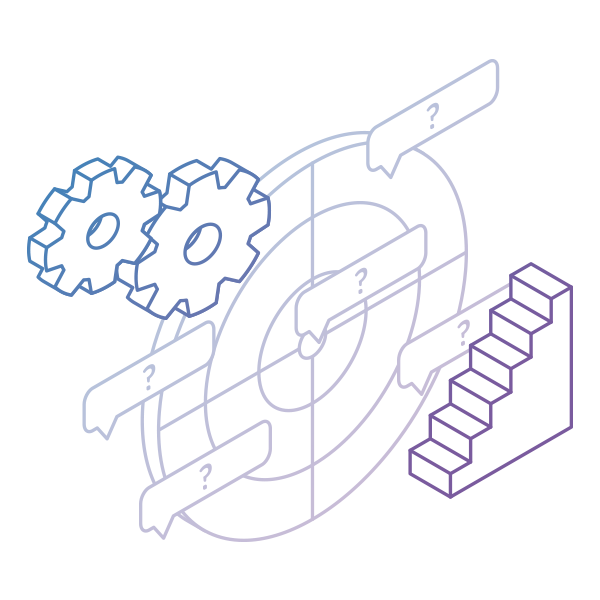No matter what you might read all over the internet, the core of Agile is not about delivering faster or even creating better products. Instead, it’s about getting timely feedback so you can “learn faster”.
So, instead of asking “how to build products faster?”, the question should be “how to get feedback faster?”. In Agile project management, software development, and other business domains, this happens through regular ceremonies, also known as “cadences” or “events”. Let’s learn more about what they are and their different types.
What Are Agile Ceremonies?
Agile ceremonies are meetings held on a regular basis with the goal of building an information flow of internal or external feedback within a team or the entire organization. They are an integral part of every Agile project management process. Agile cadences can help you build synergy within a single team, across multiple organizational levels, and on the enterprise level.

Building symbiosis between all organizational levels
Scrum and Kanban are the leading Agile methodologies applied to manage work today, so the list of the most popular Agile ceremonies includes both Kanban and Scrum meetings. The Kanban-based ones feature daily Kanban meeting, replenishment, service delivery review, etc, while the Scrum-based events include sprint planning, sprint review, and others.
The Importance of Agile Ceremonies
The Agile cadences enable all parts of a work management system to constantly exchange information. In turn, this keeps the entire system continuously updated which makes it more and more agile.
Furthermore, they provide teams and companies with a structured way to track projects’ progress which can result in:
- Competitive edge;
- Superior customer value delivery;
- Enhanced team collaboration and cultural alignment;
- Ability to quickly adapt to changes and priorities.
Common Myths about Agile Ceremonies
Before moving forward, it’s important to clear out a few myths about the ceremonies in Agile that you might’ve encountered before.
Agile ceremonies don’t equal Scrum ceremonies.
While the events in Scrum are a core part of the framework, the more general idea behind “Agile ceremonies” refers to cadences/feedback loops that are not explicitly prescribed. In other words, the ceremonies that you apply in your organization should be tailored to your unique scenario and the chosen Agile method or framework.
The ceremonies in Agile are not only applicable at the team level.
To create a holistic information flow within your company, you need to integrate regular feedback loops across middle and strategic management levels. The idea is to create a cyclical exchange of feedback between all organizational levels, so you can quickly shift operations based on changing business priorities, emerging customer requirements, etc.
Having said that, let’s take a closer look at the Agile ceremonies that you can integrate within your company.
Types of Agile Ceremonies
Based on the specific Agile method or framework that you’ve decided to apply in your organization, you can utilize different types of Agile ceremonies. As discussed, the most widely implemented Lean/Agile approaches to project management are Kanban and Scrum, so let’s review the meetings the two Agile methodologies use.
Kanban-Based Agile Ceremonies
Kanban is a workflow management approach that relies on continuous flow, and over the years, it has become a cornerstone of the Lean/Agile mentality. The method aims to adapt to the current environment in organizations, which means that it doesn’t prescribe specific roles or events/ceremonies that teams need to apply. Instead, their implementation is a decision that managers need to take based on their unique scenario.
 Work process in Kanban
Work process in Kanban
Still, a few Kanban cadences are worth exploring because of their potential to create coherent feedback loops and enable true organizational adaptability.
Let’s take a look at the key ones below.
 Feedback loops in Kanban
Feedback loops in Kanban
1. Daily Kanban
The Daily Kanban or Team Kanban meeting is a team-based cadence that is held every day. All team members stand up in front of a Kanban board and “walk it” from the right (the part where work items are closer to being completed) to the left (the part where work items are still at the beginning of the process or have not been started yet).
The intent of the Daily Kanban is to have a quick overview of the work in progress and keep everyone aligned with what’s going on in the process. This includes focusing on completing work items, discussing potential impediments and resolving issues that might slow down the process. It is recommended that this meeting should not be longer than 15-20 minutes to be as efficient as possible.
2. Replenishment/ Commitment Cadence
The Kanban replenishment is a meeting that can be held both within a single or across multiple teams (when you have multiple dependent teams responsible for the delivery of a single product/service). The main goal of the cadence is to select work items from the backlog and replenish a delivery queue until the next Replenishment meeting or whenever demand for new work arises. You can think of the delivery queue as a commitment point (ex. “Committed” column on a Kanban board) in the process, containing work items with clear details which are ready to be executed.
 Commitment point for work delivery on a Kanban board
Commitment point for work delivery on a Kanban board
There isn’t a single rule for when the meeting should happen. You can hold it weekly, biweekly, monthly, or in an ad-hoc manner based on the arrival of new work requests. The entire team (or multiple teams) attends Kanban replenishment meetings and they’re usually facilitated by managers or team/service leaders.
3. Service Delivery Review
The Service Delivery Review is one of the main Kanban ceremonies. Just like the replenishment meeting, it can be applied across a single team or multiple interconnected ones. The idea is to examine the end-to-end flow of work from initiation to customer delivery. It involves reviewing the effectiveness of the whole process by comparing current service delivery capabilities to customer expectations and analyzing flow metrics in Kanban such as cycle time and throughput with the help of different charts.
 Cumulative flow diagram in Kanban
Cumulative flow diagram in Kanban
It’s recommended to hold Service Delivery Reviews twice a month or whenever you feel your process is not meeting customer delivery expectations. However, regularly analyzing your workflows will help you uncover inefficiencies and align work demand with actual capabilities. The meeting can be facilitated by a dedicated Service Delivery Manager (an optional Agile team role in Kanban) or other line managers, and it involves the entire delivery team(s), including other relevant stakeholders.
4. Operations Review
The Operations Review is a Kanban cadence that is held at a higher management level than the Service Delivery Review. It uses information from different workflows (usually collected through Service Delivery Reviews) and aims to optimize the performance of multiple Kanban systems. Typically, the scope of Operations Review meetings covers an entire business area, product line, or a large functional department within an enterprise.
It’s a good practice for the meeting to be held monthly so high-level managers can explore delivery capabilities gathered from lower-level cadences such as Service Delivery Reviews. Some of the participants can include Service Delivery Managers for multiple Kanban systems or teams, functional managers, directors, heads of PMO, customer representatives, etc.
5. Strategy Review
The Strategy Review is applied at the highest strategic/management level and deals with the direction of the company in general. Its main intent is to analyze the current market conditions and set high-level objectives.
The Strategy Review gathers and discusses information from lower-level cadences such as Operations and Service Delivery Reviews. As a result, high-level managers remain informed about the current organizational capabilities so they can align them with strategic initiatives. This type of cadence is usually held quarterly and involves only senior-level executives.
Scrum-Based Agile Ceremonies
Just like Kanban, Scrum has its own Agile ceremonies. They’re based on iterations (sprints) and are more clearly defined due to Scrum’s prescriptive nature.

Work process in Scrum
The Scrum ceremonies are mostly applied at the team level. However, you can elevate them beyond that with the help of Agile scaling frameworks such as LeSS (Large-Scale Scrum) or Scrum@Scale.
Let’s take a look at the Scrum-based Agile ceremonies below.
6. Daily Stand-Up
The daily stand-up meeting is perhaps the most famous and widely-applied Agile practice. It represents a 15-minute meeting that is held standing up in front of an “information radiator” such as a Kanban board. In practice, it’s almost the same as the Daily Kanban meeting. The only difference is that the agenda of the meeting is stricter in Scrum as every team member should answer the following questions:
“What did I do yesterday?”
“What am I going to do today?”
“Is there something blocking my progress?”
The people who attend the meeting include the development team and the Agile coach or Scrum master. The Product Owner can also attend but it’s not a requirement.
7. Sprint Planning
The sprint planning ceremony in Agile is a 1-2 hours meeting that occurs at the start of every Scrum iteration/sprint. Its main intent is to populate a Sprint backlog and prepare a Sprint goal by committing to a batch of user stories from the Product backlog.
During the meeting, teams choose the next highest priority items to execute in the sprint. This happens by analyzing their Agile velocity (how many story points they can execute in a single iteration). As part of the ceremony, the development team, the Product Owner and Scrum Master also write acceptance criteria for the user stories and prepare technical tasks for their execution.
8. Sprint Review
Each iteration in Scrum ends with the Sprint Review. During the ceremony, Scrum teams present their finished increment (functionality) to the customer or the Product Owner. The intent of the ceremony is to get external feedback for their work/user stories, add new requirements to the Product backlog or reprioritize it, if necessary.
Each Sprint Review involves the development team, the Scrum Master (Agile coach), and the Product Owner. It’s good practice for the customer to attend the meeting too.
9. Sprint Retrospective
To reflect on what has happened during the sprint, Scrum teams engage in Sprint Retrospectives right after the Sprint Review. The retrospective is a widely-applied Agile ceremony that Kanban teams often use too in an ad-hoc manner.
During the event, teams analyze all problems or impediments that happened during the sprint and look for ways to prevent them from reoccurring. The goal of the retrospective is to continuously engage in “lessons learned” sessions over the course of the project.

PDCA cycle for continuous improvement
10. Backlog Refinement (Unofficial)
While being an unofficial Scrum-based Agile ceremony, the backlog refinement cadence is worth briefly mentioning. This meeting can happen towards the end of a sprint. Its main goal is to estimate, add more details, or break down the next high-priority user stories, so they’re prepared for commitment during the Sprint Planning ceremony.
Best Practices to Master Your Agile Ceremonies
While there are no best ways to conduct the ceremonies in Agile, as you should adapt them to your unique scenario, there are certainly some recommendations that you should keep in mind.
-
Keep every meeting actionable and engaging. It's important to have a clear action item list, especially when talking about retrospectives. Also, create a welcoming environment for everybody in the meeting and ask for the opinions of all team members, managers, or other relevant stakeholders.
-
Don’t turn stand-ups into status reports. The stand-up meeting is about uncovering process impediments and ensuring everybody is on the same page with the work at hand. Try to keep the meeting “to the point” and not turn it into a long status report.
-
Use facilitators and time-keepers. Meetings can quite easily go out of hand or time if there’s nobody to keep the participants in check.
-
Beware the trap of “too many meetings”. When applying a lot of cadences in the organization, there’s always a possibility that they might turn into waste. Try to define the value of every meeting and map them to the ones already happening in your organization if possible.
-
Build a Continuous improvement mindset. Just like processes, ensure you continuously improve the way you conduct meetings in your organization. During each one, ask the participants if they think something could be optimized and take their opinions into consideration.
We offer the most flexible software platform
for outcome-driven enterprise agility.
In Summary
Agile ceremonies help companies get timely feedback and adapt to changes. Some of the most popular ceremonies in Agile are divided into 2 types.
Kanban-based cadences/ ceremonies:
- Daily Kanban
- Replenishment
- Service Delivery Review
- Operations Review
- Strategy Review
Scrum-based ceremonies:
- Daily Stand-Up
- Sprint Planning
- Sprint Review
- Sprint Retrospective





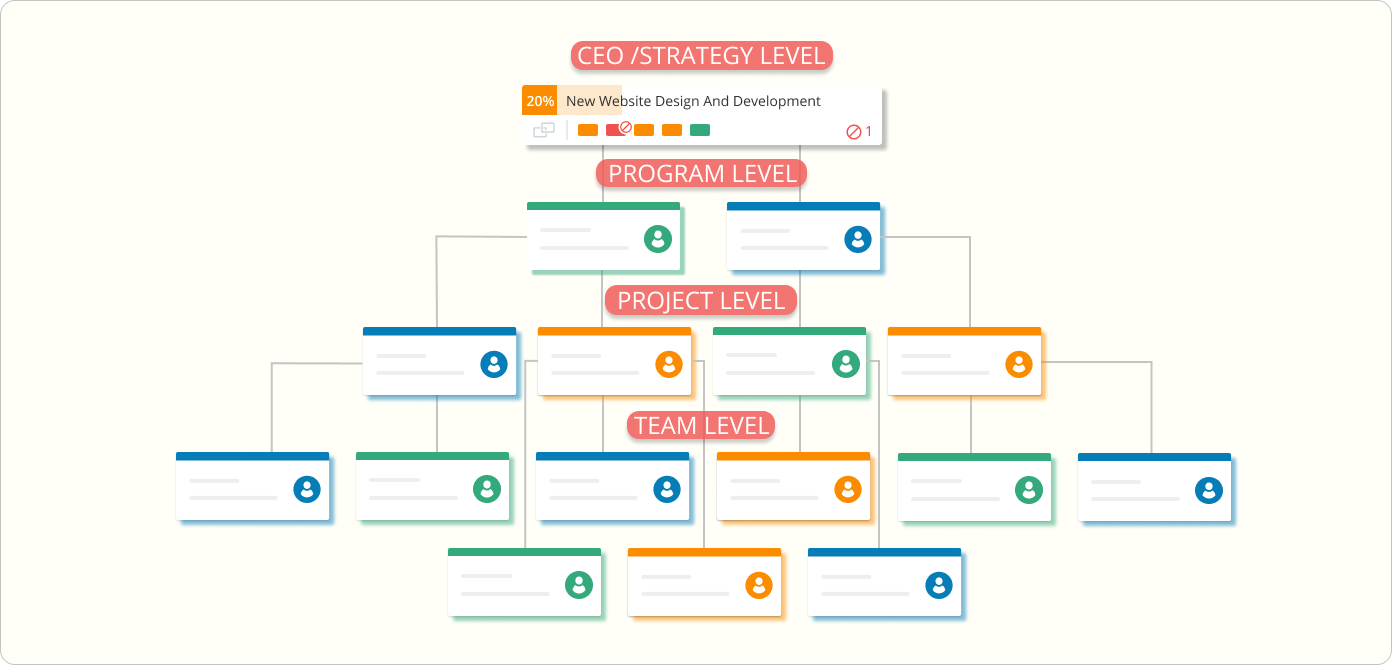
 Work process in Kanban
Work process in Kanban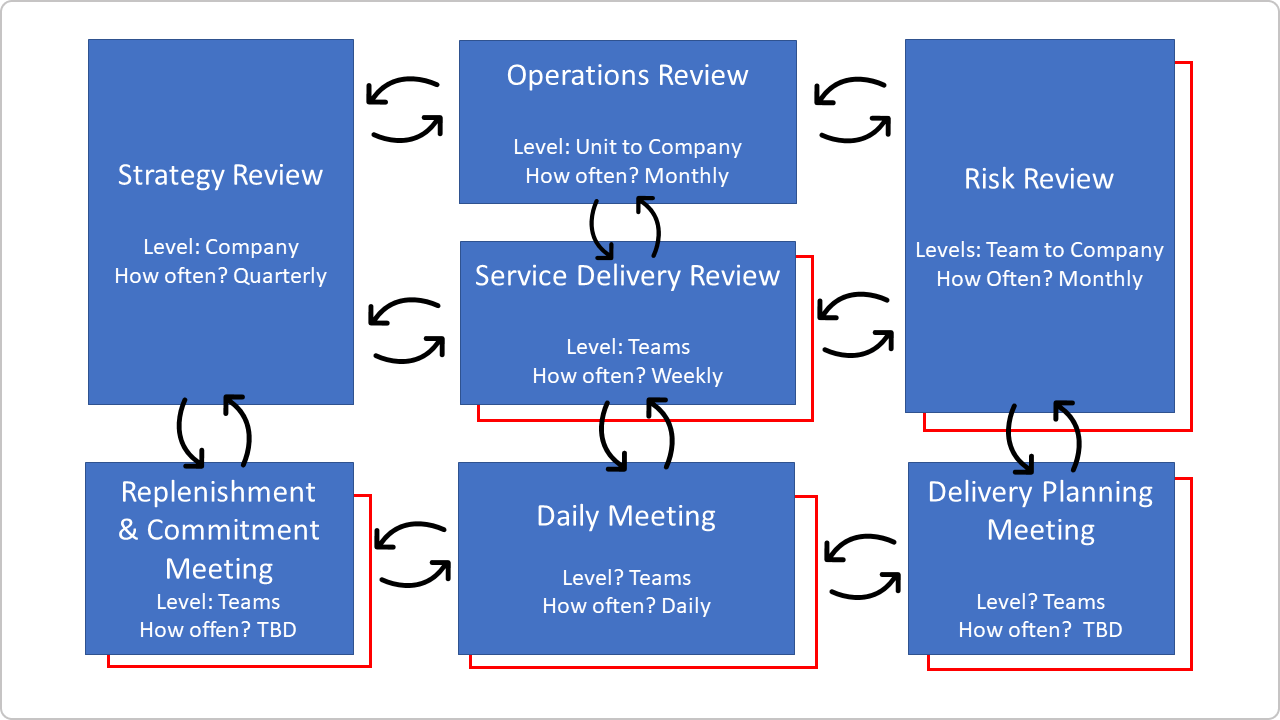 Feedback loops in Kanban
Feedback loops in Kanban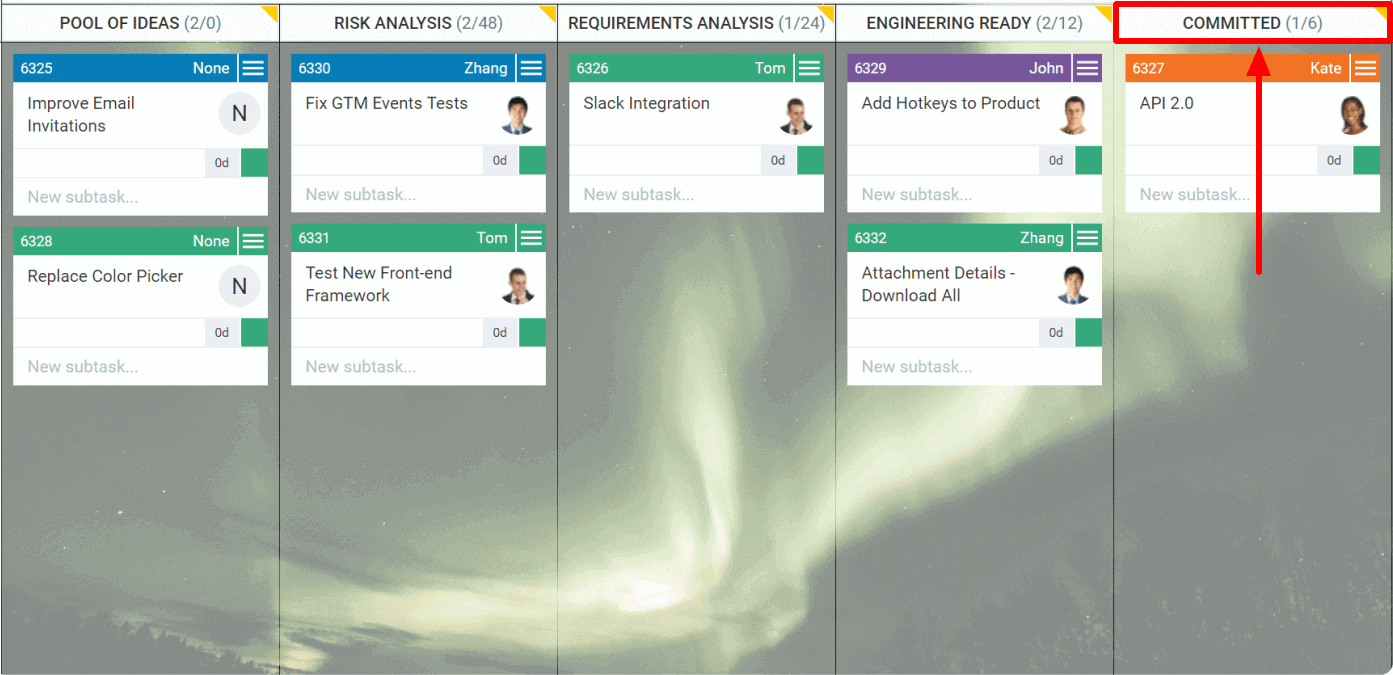 Commitment point for work delivery on a Kanban board
Commitment point for work delivery on a Kanban board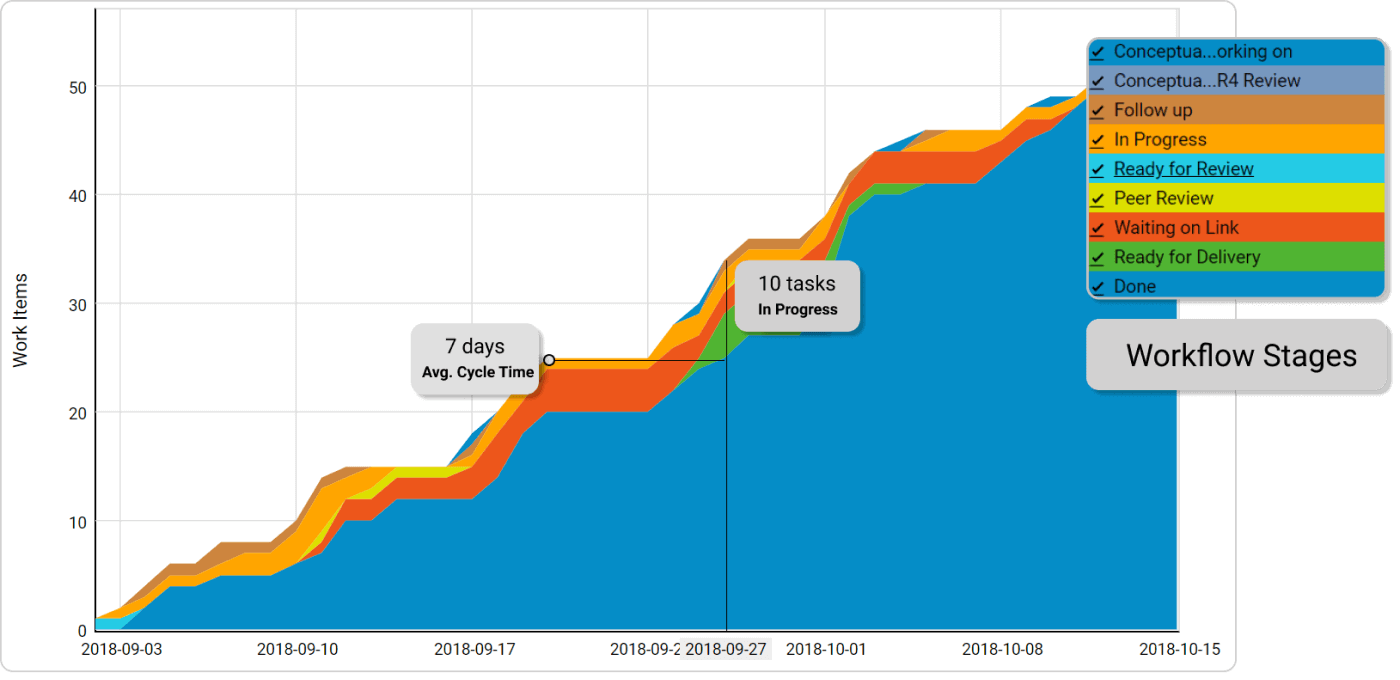 Cumulative flow diagram in Kanban
Cumulative flow diagram in Kanban


